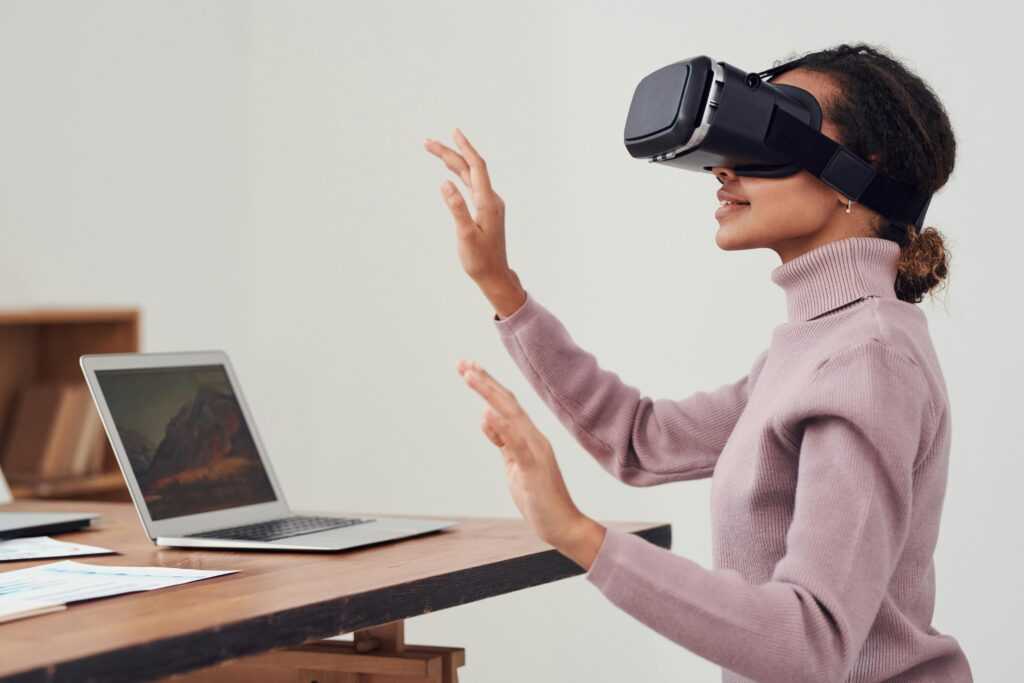Artists have always looked for new mediums to express ideas, from cave walls to digital screens. Today, technology is offering a fresh space for creativity that feels limitless. Virtual reality (VR) is emerging as more than a tool; it’s becoming a platform where imagination shapes fully immersive experiences. For those curious about unconventional creative opportunities, you can also read more at this link.
Immersion as a New Artistic Medium
Stepping into a VR artwork is unlike viewing a traditional painting or sculpture. Instead of observing from a distance, audiences enter a constructed environment where sound, movement, and visual design combine. This shift makes the spectator part of the creation rather than a passive viewer. Galleries, festivals, and museums are now hosting VR exhibitions, allowing visitors to explore spaces that would be impossible in reality.
Such immersive projects break down barriers between performer and participant. A room can transform into a cosmic journey or an abstract landscape where colors respond to hand gestures. This interactive quality encourages deeper emotional engagement and sparks fresh conversations about the definition of art itself.
Examples of VR in Contemporary Art
Several pioneering creators have already embraced this technology to expand their practices.
- British artist Rachel Rossin combines coding with painting to craft dreamlike VR environments.
- The “Marshmallow Laser Feast” collective uses VR to reimagine natural ecosystems, inviting audiences to experience life from a non-human perspective.
- In Japan, teamLab experiments with interactive installations where VR and projection mapping overlap, producing sensory-rich spectacles.
These examples highlight how VR is no longer experimental fringe work but part of mainstream artistic dialogue. Each project demonstrates how storytelling, design, and emotion can merge inside a headset.
Opportunities for Artists in Virtual Worlds
The adoption of VR provides new opportunities for creative professionals across disciplines. Painters can extend their work into immersive 3D spaces. Musicians may design virtual concerts where audiences can walk inside melodies. Sculptors can create monumental pieces without physical material costs.
Commercial opportunities also arise. Virtual galleries allow global access to exhibitions without geographical limitations. Collectors can explore and purchase works inside digital spaces, making art more accessible to international markets. Educational institutions are also beginning to integrate VR projects into art programs, giving students new tools to experiment.
Challenges and Barriers to Consider
While VR promises exciting possibilities, it also introduces several hurdles. High production costs remain a significant obstacle. Headsets, motion sensors, and development software require investment, making it difficult for independent artists to compete with larger studios.
Accessibility is another issue. Not all audiences have access to VR devices, which restricts the potential reach of projects. In addition, questions about preservation arise. Unlike a physical painting that lasts for centuries, digital works must contend with software updates and hardware obsolescence.
Finally, there’s the challenge of creative adaptation. Traditional techniques do not always translate into immersive formats, meaning artists must learn coding, 3D modeling, and interaction design. Balancing technical learning with creative flow is an ongoing struggle.
The Future of Art in Virtual Spaces
Looking ahead, VR may redefine how society experiences creativity. Collaborations between technologists and artists could lead to hybrid exhibitions where physical and digital realities merge seamlessly. As equipment becomes more affordable and platforms evolve, more creators will experiment with virtual spaces.
Artists who adapt to this medium may influence how audiences engage with culture in the decades to come. The potential is vast, ranging from deeply personal expressions to shared, collective experiences in virtual worlds.
Conclusion
Virtual reality represents a frontier where imagination meets innovation. From immersive galleries to interactive sculptures, creators are discovering fresh ways to tell stories and engage audiences. Opportunities for growth are significant, though challenges like cost and accessibility remain pressing. Still, the promise of VR suggests that the art of tomorrow will be less about static objects and more about experiences that people can step into, explore, and remember.


 Harriet Bellvovy, the visionary founder of Innov Art Foundry, has cultivated a platform that seamlessly bridges the traditional and modern aspects of the art world. Under her leadership, Innov Art Foundry has become a hub for the latest art news, keeping enthusiasts and professionals alike informed about significant exhibitions, breakthroughs, and emerging trends. Her commitment to fostering a vibrant art community is evident in the platform's comprehensive coverage, ensuring that artists and art lovers are always at the forefront of the dynamic landscape.
In addition to art news, Harriet Bellvovy has expanded Innov Art Foundry's focus to include art entrepreneurship, providing valuable insights for artists aspiring to turn their creative passions into thriving businesses. Her dedication to exploring diverse forms of artistic expression is further showcased in the platform's deep dive into tattoo art and the transformative role of virtual reality in the art world. Harriet's innovative approach continues to inspire and empower a new generation of artists, making Innov Art Foundry a vital resource in the contemporary art scene.
Harriet Bellvovy, the visionary founder of Innov Art Foundry, has cultivated a platform that seamlessly bridges the traditional and modern aspects of the art world. Under her leadership, Innov Art Foundry has become a hub for the latest art news, keeping enthusiasts and professionals alike informed about significant exhibitions, breakthroughs, and emerging trends. Her commitment to fostering a vibrant art community is evident in the platform's comprehensive coverage, ensuring that artists and art lovers are always at the forefront of the dynamic landscape.
In addition to art news, Harriet Bellvovy has expanded Innov Art Foundry's focus to include art entrepreneurship, providing valuable insights for artists aspiring to turn their creative passions into thriving businesses. Her dedication to exploring diverse forms of artistic expression is further showcased in the platform's deep dive into tattoo art and the transformative role of virtual reality in the art world. Harriet's innovative approach continues to inspire and empower a new generation of artists, making Innov Art Foundry a vital resource in the contemporary art scene.